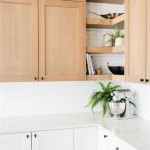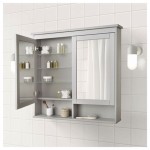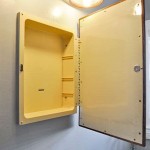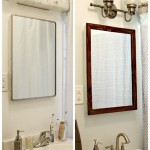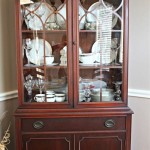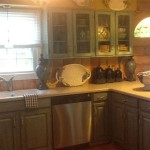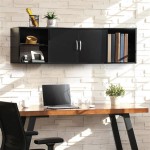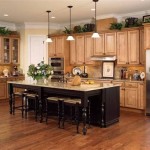Designing A Stylish And Functional Home Wine Bar Cabinet
A home wine bar cabinet is more than just a storage space for wine; it's a statement piece that blends functionality and aesthetics. It's a crucial element in creating a sophisticated entertaining space and a private retreat for wine enthusiasts. Designing a wine bar cabinet requires careful consideration of storage needs, stylistic preferences, and the overall flow of the home.
The process starts with an assessment of individual needs and preferences. How much wine needs to be stored? What types of wine are typically consumed? Is there a need for glassware storage, cocktail-making equipment, or perhaps a small refrigerator? Answering these questions forms the foundation for a well-designed cabinet that not only looks appealing but also serves its intended purpose effectively.
Key Considerations Before Design
Before diving into the specifics of cabinet design, several key factors need to be addressed. These considerations directly influence the functionality and overall success of the wine bar cabinet.
Space Assessment: The available space is paramount. Measure the area where the wine bar cabinet will reside. Consider the layout of the room and how the cabinet will integrate with existing furniture and décor. A small apartment might benefit from a compact, wall-mounted unit, while a larger home could accommodate a more expansive, freestanding cabinet or even a built-in design.
Storage Requirements: Determine the number of wine bottles that need to be stored. This will dictate the size and configuration of the wine racks. Also, consider the types of wine being stored. Red wines, for example, are often stored horizontally to keep the cork moist, while sparkling wines may benefit from vertical storage. Beyond wine, factor in space for glassware (wine glasses, cocktail glasses), bar tools (shakers, strainers, jiggers), and potentially spirits and mixers.
Budget Allocation: Establish a realistic budget early in the design process. Wine bar cabinets can range from relatively inexpensive, mass-produced units to custom-built, high-end designs. Having a clear budget will help narrow down the material choices, features, and overall scope of the project.
Essential Design Elements
Once the preliminary considerations are addressed, the focus shifts to the specific design elements that will shape the wine bar cabinet. These elements include the type of cabinet, materials, storage options, and aesthetic details.
Cabinet Types: There are several types of wine bar cabinets to choose from, each offering its own advantages. * Freestanding Cabinets: These are the most common type, offering flexibility in placement and ease of installation. They come in various sizes and styles, making them suitable for a range of spaces. * Built-in Cabinets: These are integrated into the existing cabinetry or architectural structure of the room, offering a seamless and custom look. They are ideal for those seeking a permanent, high-end solution. * Wall-Mounted Cabinets: These are space-saving options that are mounted directly to the wall. They are well-suited for smaller apartments or rooms where floor space is limited. * Corner Cabinets: These are designed to fit into the corner of a room, maximizing space utilization. They are a good choice for rooms with unusual layouts.
Material Selection: The choice of materials significantly impacts the appearance and durability of the wine bar cabinet. * Wood: Wood is a classic and versatile material that can be stained or painted to match any décor. Popular wood choices include oak, maple, cherry, and walnut. * Metal: Metal, such as stainless steel or wrought iron, can add a modern or industrial touch to the cabinet. It is durable and easy to clean. * Glass: Glass doors or shelves can showcase the wine collection and add a touch of elegance. Tempered glass is recommended for safety. * Stone: Stone countertops, such as granite or marble, can provide a luxurious and durable surface for preparing drinks.
Storage Solutions: Optimize the cabinet's storage capacity with well-designed storage solutions. * Wine Racks: Wine racks are essential for storing wine bottles horizontally. They can be made of wood, metal, or plastic. Consider the size and shape of the bottles when selecting wine racks. * Glassware Storage: Provide dedicated storage for wine glasses, cocktail glasses, and other barware. This can include hanging racks or shelves with dividers. * Drawers and Shelves: Incorporate drawers for storing bar tools, napkins, and other accessories. Shelves can be used for storing spirits, mixers, and decorative items. * Refrigeration: Consider adding a small wine refrigerator or beverage center to keep wines at the optimal temperature. This is particularly important for white wines and sparkling wines.
Aesthetic Considerations: The wine bar cabinet should complement the existing décor of the room. * Style: Choose a style that matches the overall aesthetic of the home. Options include traditional, modern, rustic, and minimalist. * Color: Select a color that complements the walls, furniture, and flooring. Neutral colors, such as white, gray, and black, are versatile and can be easily integrated into any décor. * Hardware: Choose hardware, such as knobs and pulls, that complements the style of the cabinet. * Lighting: Add lighting to the cabinet to highlight the wine collection and create a warm and inviting atmosphere. Options include LED strip lights, recessed lighting, and accent lighting.
Optimizing Functionality and Ergonomics
Beyond aesthetics, functionality and ergonomics are crucial for a user-friendly wine bar cabinet. The design should facilitate ease of use and minimize strain.
Countertop Height: The countertop height should be comfortable for preparing drinks. A standard countertop height of 36 inches is generally suitable, but consider adjusting this based average height.
Work Triangle: If the wine bar cabinet includes a sink or refrigerator, consider the work triangle principle. This principle suggests that the sink, refrigerator, and cooking area (if applicable) should be arranged in a triangle to minimize walking distance and maximize efficiency.
Accessibility: Ensure that all storage areas are easily accessible. Avoid placing items too high or too low, and consider using pull-out shelves or drawers for easier access to items stored in the back of the cabinet.
Incorporating Technology
In today's technologically advanced world, it's increasingly common to integrate technology into home wine bars. Technology can enhance the functionality, convenience, and overall enjoyment of the space.
Smart Wine Fridges: Smart wine fridges offer precise temperature control, humidity control, and even integration with smartphone apps. These features allow for monitoring and adjusting the environment inside the fridge remotely, ensuring optimal wine storage conditions.
Automated Lighting Systems: Automated lighting systems can be programmed to create different ambiance settings for various occasions. Motion sensors can also be used to automatically turn on the lights when someone approaches the cabinet.
Sound Systems: A built-in sound system can enhance the atmosphere and create a more immersive experience. Wireless speakers can be easily integrated into the cabinet or placed nearby.
Wine Inventory Management Systems: For serious wine collectors, a wine inventory management system can be invaluable. These systems allow for tracking the wine collection, including details such as vintage, producer, and storage location. Some systems even integrate with online databases to provide information about the wines.
Enhancing the Ambiance
The wine bar cabinet is not just a functional storage unit; it's also a focal point for entertaining and relaxation. By incorporating thoughtful design elements, the ambiance of the space can be significantly enhanced.
Backlighting: Backlighting can create a dramatic effect by illuminating the wine bottles from behind. This can be achieved with LED strip lights or other types of accent lighting.
Mirrors: Mirrors can be used to create the illusion of more space and to reflect light, making the room feel brighter and more open.
Artwork and Décor: Add artwork, sculptures, or other decorative items to personalize the space and reflect individual tastes.
Plants: Incorporate plants to add a touch of nature and create a more relaxing atmosphere. Herbs, such as rosemary and thyme, can also be grown near the wine bar for use in cocktails and other drinks.

Built In Bar Cabinets For Your Home Quality Custom Cabinetry

Built In Bar Cabinets For Your Home Quality Custom Cabinetry

How To Design A Striking Yet Functional Home Bar Designcafe

Diy Home Bar Setups Stylish Tips For Your Space

19 Wet Bar Ideas For A Stylish Functional Home Design Sugar Cloth

How Bar Cabinet Ideas Can Help You Live A Better Life Saraf Furniture

How To Design The Perfect Home Bar With 17 Tips From Ludc

How To Design A Luxurious Home Bar Elevate Entertaining Extreme

Custom Shaker Style Small Home Wine Bar Design Furniture Idea Manufacturers

6 Tips For Building Your Dream Home Bar The Scout Guide
Related Posts

